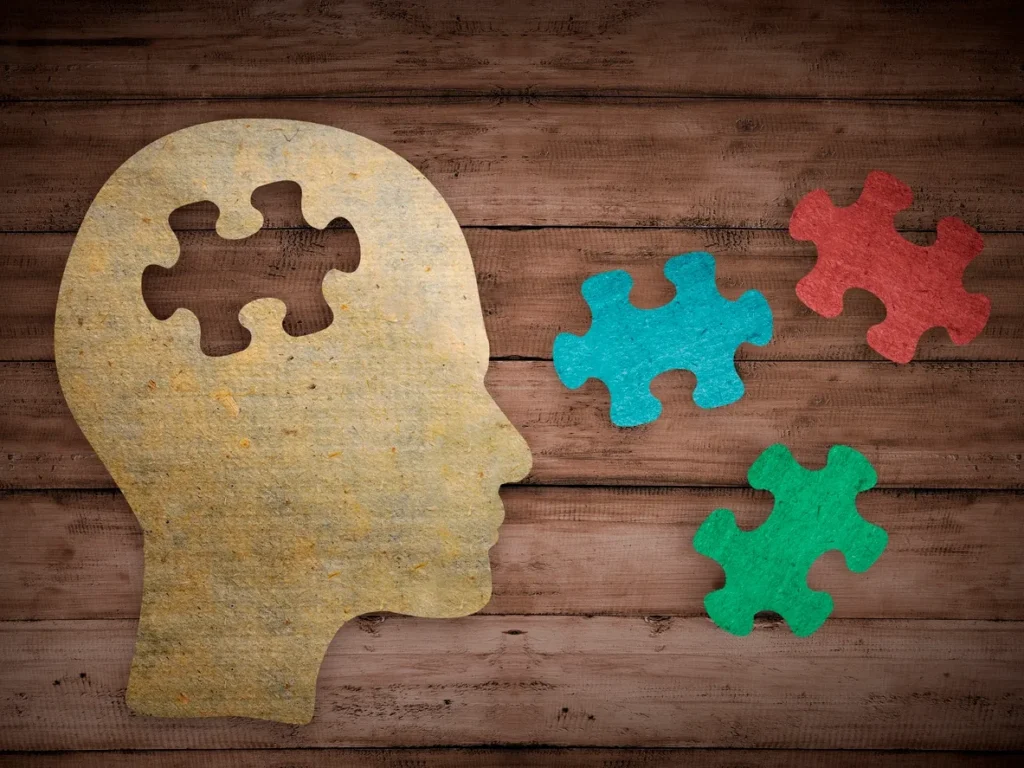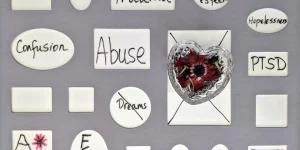How Does PTSD Affect the Brain?
Category: Trauma
Beautiful and complex, our brains have one main job: to keep us safe. As we move through life, our brain converts experiences into memories so that we can move toward things that feel good and move away from things that feel “bad” or not so good.
Each memory acts as a blueprint to help us learn, noting important details like where we were, what we smelled, what we saw, who was there, or what we were feeling, among other things.
With trauma, your brain wants to keep you safe so badly that it works overtime. It over-relies on these blueprints from the past, creating a sense of danger in the present, long after the threat is gone.
If post-traumatic stress disorder (PTSD) develops, it can lead to lasting changes in the brain and, without treatment, may prevent you from living the happiest, healthiest life possible. Here’s why it happens and what you can do to heal from trauma.

Topic Of Discussion
Trauma’s Impact on the Brain
In the United States, 3.6% of adults have PTSD, and 37% of those have symptoms that are considered severe, according to the National Alliance on Mental Illness (NAMI).
To understand why PTSD develops, it can be helpful to have a basic understanding of the brain.
The brain can be divided into three main parts, from simple to complex:
- Reptilian brain. This houses your survival instincts and manages autonomic body processes, like heart rate, breathing, hunger, and thirst.
- Mammalian brain. This contains the limbic system, which processes emotions like joy and fear. It also regulates attachment and reproduction.
- Neomammalian brain. This is responsible for sensory processing, learning, memory, decision-making, and complex problem-solving.
When you experience something traumatic, the brain shuts down all nonessential systems and moves into the “lower” brain systems. This activates the sympathetic nervous system and signals the release of stress hormones, preparing you for survival mode: fight, flight, or freeze. A fourth trauma response has also been introduced: the fawn response.
Once the threat has passed, your parasympathetic nervous system comes back online. This allows your brain to resume normal functioning with all three parts, so you can “rest and digest” what has just happened.
However, for some, this switch back does not occur. PTSD is, in essence, the brain staying in survival mode all the time, unable to relax.
Here are some of the lasting impacts of trauma on the brain and how it leads to PTSD symptoms:
Amygdala
This 1-inch, almond-shaped area of the brain is considered the “fire alarm.” Once it senses danger, the amygdala is the part that kicks you into fight-or-flight mode.
If you’re living with trauma, research shows that your amygdala doesn’t recognize the difference between a threat then and a threat now. So, when you’re reminded of a past experience, it responds exactly as it would if you were experiencing the traumatic event for the first time, sending out a rush of stress hormones, like cortisol.
As a result, you may feel like you’re on edge, on high alert, or have high levels of stress or anxiety all the time.
Hippocampus
Located at the back of the brain, the hippocampus is considered the learning center.
Research shows that the hippocampus is smaller and less active in people who’ve experienced trauma, which can create issues around memory and problem-solving.
This can make it hard for you to distinguish between the past and present, keeping you in a constant state of hyper-vigilance or strong emotional reactivity.
Prefrontal Cortex
Located at the front of your brain, the prefrontal cortex is the rational, decision-making area. For those living with trauma, research shows that the prefrontal cortex is less active.
This suppression can slow down the learning of new information that could help you control your fear. Combined with an overactive amygdala, the prefrontal cortex can have a harder time overriding the fight, flight, or freeze response.
As such, you may feel like you have a hard time controlling your fear response or struggle with logical thinking.
Nervous System
When the nervous system is constantly in overdrive with PTSD, it can shrink your window of tolerance — that is, the amount of stress you can handle before it becomes unmanageable.
Compared to a person without a history of trauma, you may find that you’re set off by smaller events or have a trauma response around an event when others might not.
How do these changes affect your daily life?
Living with trauma can be a challenge. With so many changes taking place in the brain, along with stress hormones circulating through your system on a regular basis, you may experience several symptoms of PTSD.
According to the American Psychiatric Association (APA), some of these include:
- rage
- anxiety
- irritability
- flashbacks
- nightmares
- panic attacks
- memory issues
- trouble making decisions
- difficulties in thinking, concentrating, or learning
You may also notice a lack of motivation. When your brain is using so much energy to protect you from (perceived) outside threats, you may feel depleted. It can be difficult to muster up the strength for daily responsibilities or self-care activities.
Also, if your brain is on high-alert for threats, it may be hard to accurately pick up on how others feel and think, or understand their motives. This means communication challenges may arise, and your closest relationships could become strained.
How to Heal from PTSD
PTSD treatment looks different for everyone. It usually includes some form of psychotherapy, aka talk therapy. Some recommended modalities include:
- Cognitive behavioral therapy (CBT). This method can identify and interrupt negative thought patterns, which can lead to a change in behavior.
- Cognitive processing therapy (CPT). This method can help you restructure the beliefs you took away from the traumatic event.
- Prolonged exposure therapy (PE). This can help you learn distress tolerance and self-soothing techniques as you work through triggers in a safe environment.
- Eye movement desensitization and reprocessing (EMDR). This method uses tones or taps to revisit a traumatic experience through a different lens and form new beliefs around it.
- Brainspotting. Brainspotting (BSP) is a relatively new type of therapy designed to help people access, process, and overcome trauma, negative emotions, and pain, including psychologically induced physical pain. It combines body-based approaches, the power of the therapeutic relationship and brain-based processing. It is based on the premise that “where you look affects how you feel” and finds that eye positions correlate with unconscious, emotional experiences.
The American Psychological Association also recommends selective serotonin reuptake inhibitors (SSRIs) for anxiety, depression, and sleep disturbances associated with PTSD. The most commonly prescribed medications are:
- paroxetine (Paxil)
- fluoxetine (Prozac)
- sertraline (Zoloft)
There are several self-care strategies that can make a big difference on your healing journey as well, including eating a nutrient-dense diet, sleeping 7 to 9 hours a night, getting moderate exercise 5 times a week, and developing a mindfulness or meditation practice.
Do you or someone you know suffer from PTSD or trauma symptoms? Consider scheduling an appointment with Tri-Star Counseling. We specialize in trauma treatment and have a trained Brainspotting therapist ready to journey along side you on your path to healing.


